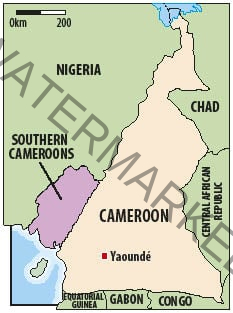There are two distinct nations: The Southern Cameroons and La République du Cameroun. The sovereignty of La République ended at her boundaries when she became independent on January 1, 1960.
By Uchiba Nelson
Too many of our people still live in denial.
In the United States, I have met African Americans who say: “I am not Black, I am not African — because we do not eat the same food.” Sadly, that same mindset exists among some Southern Cameroonians who say: “I am not Southern Cameroonian, I am not Ambazonian.” Instead, they hide behind the false identity of being “Cameroonian.”
But here is the truth: there is no country called “Cameroon.”
There are two distinct nations: The Southern Cameroons with capital in Buea, and La République du Cameroun with capital in Yaoundé. The sovereignty of La République ended at her boundaries when she became independent on January 1, 1960.
Even Paul Biya himself has acknowledged that Buea was the capital of the Southern Cameroons.
So, how did La République du Cameroun — a state separated from us by international boundaries — swallow up a self-governing people without a single union treaty?
At the Paris Peace Conference, Paul Biya admitted that his government wanted to assimilate and integrate the Southern Cameroons. But those very words prove the truth: if assimilation was needed, then we were never one people.
To those who still beg for acceptance under La République, remember this: a stone can never turn into a crocodile. That is why many Francophones mock you, calling you “anglofools.”
Brothers and sisters, the facts are clear. Southern Cameroons has never been, and will never be, part of La République du Cameroun.
Justice demands one thing only: that La République du Cameroun withdraw from Southern Cameroons and return to its lawful boundaries of January 1, 1960.
Uchiba Nelson

